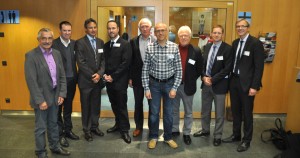History
In 2002, Anthony Strong and colleagues provided the first convincing evidence that spreading depolarizations occur in the human brain following traumatic injury or intracerebral hemorrhage. The following year, a group of interested investigators convened in Copenhagen, Denmark to discuss ways to advance these findings and further investigate their implications.
The COSBID group was thus launched with the primary aim of accumulating a core dataset from monitoring patients in four disease categories: malignant ischemic stroke, aneurysmal subarachnoid hemorrhage, intracerebral hemorrhage, traumatic brain injury. Within a few years, it became clear that spreading depolarizations are a fundamental component of these disease processes, occurring in up to 80% of patients monitored. Meeting at least once annually, COSBID investigators have worked together to develop clinical protocols, improve monitoring methods, and develop analysis techniques.
Today, the COSBID collaboration continues as a research interest group focused on spreading depolarizations with a renewed urgency and energy to bring basic science discoveries to bedside application. The group has broad international participation that, befitting the translational mission, includes basic and clinical scientists from diverse backgrounds.

